Factor Bikes Origins: Part Two
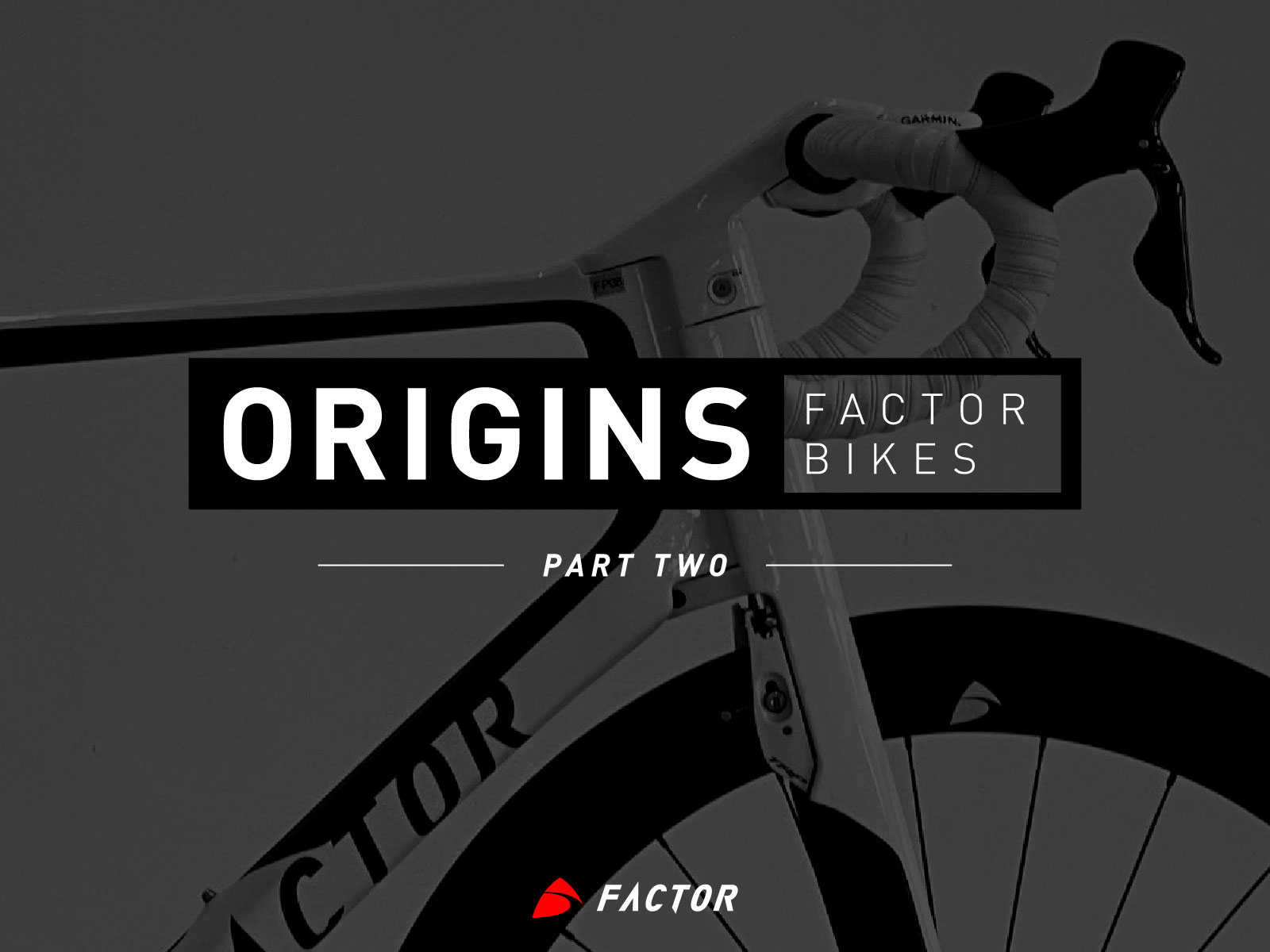
Part 2: “We had unfinished business in cycling”
The original Factor 001 had over-delivered as a halo project, creating pressure, expectation and temptation to find a way to put it into production. This is the story of how that was accomplished.
The Factor 001 was a high-tech engineering showcase. With the creation of Factor Bikes, it was time for the original 001 to mature into a production bike that could be built in greater numbers and sold for less than five figures. Its creators, BF1 Systems, led by John Bailey, who is now MD of Factor Bikes UK, were used to solving problems “the F1 way”, for which read ‘the expensive, difficult way’.
“At the start of the 001 project, I’d looked at cycling and thought that the UCI regulations really limited innovation,” says John. “If they opened up the regs, but kept a cost cap on framesets to satisfy the IOC (International Olympic Committee), the possibilities would be so interesting.
“Now that I’m part of the cycling industry, rather than F1, I can see the limits of development budgets and volume manufacturing, and I have to temper my engineering inclinations.” It’s the Factor story in microcosm.
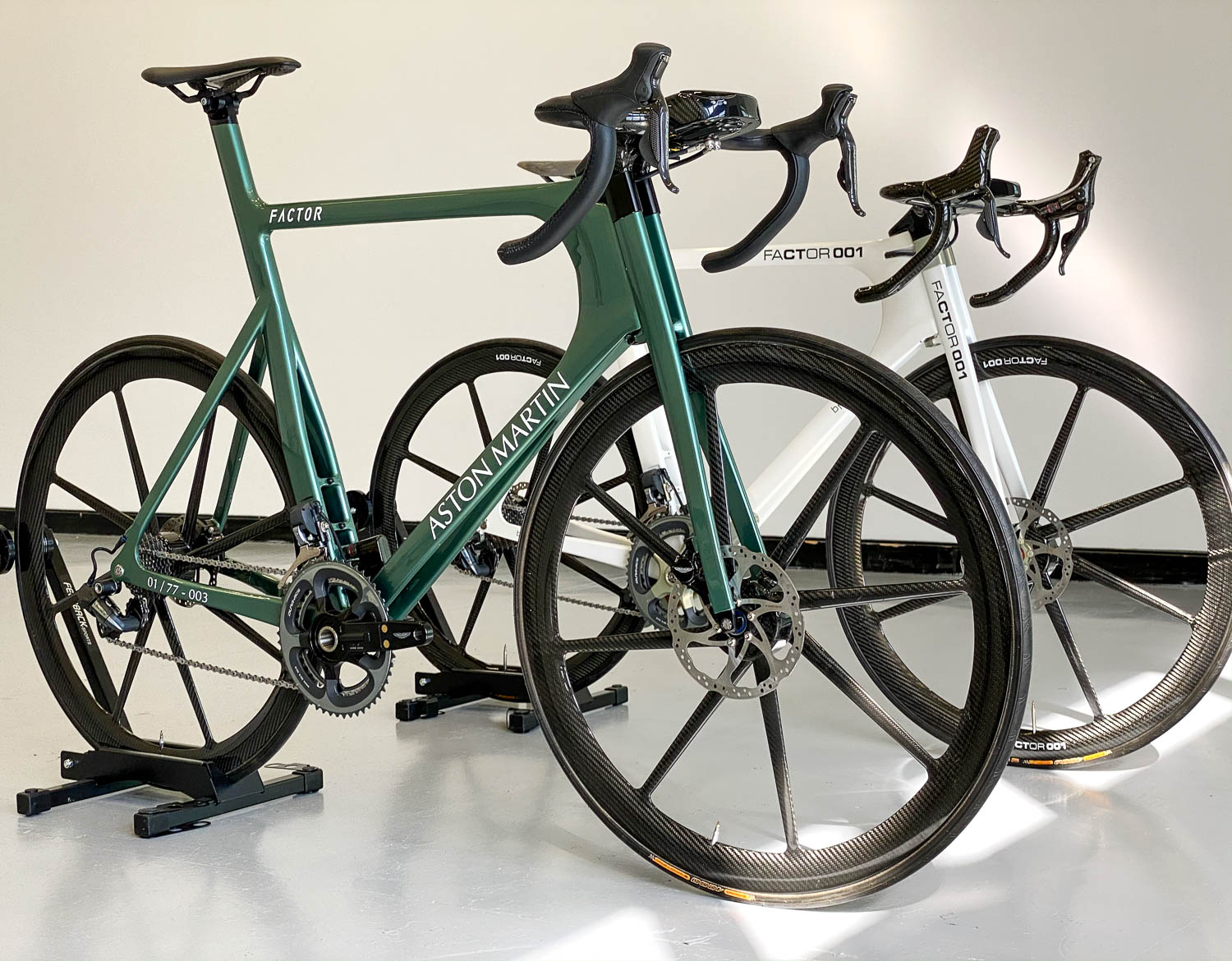
UNFINISHED BUSINESS
The 001, and the Aston Martin One-77 superbike collaboration which followed, made a real impact in the cycling industry. Being on the flipside of John’s perspective, the cycling world admired, perhaps a little jealously, what was possible with F1 resources. There must have been conversations about whether it could be put into production in the HQs of dozens of bike brands.
Of all the industry figures whose heads had been turned, one veteran, recently turned consultant, was in a position to take action. He contacted BF1, presented a proposal to turn the 001 into a production bike, and made it stick.
“That’s how Factor Bikes began,” says John. “The accountant tried to talk me out of it, but I went into cycling because I wanted to, not because it was sensible.
“I felt like we had unfinished business in cycling. I wanted to make Factor a known brand. We had a bit of notoriety from the 001, and I also felt like we really had something to offer in terms of technology and design.”
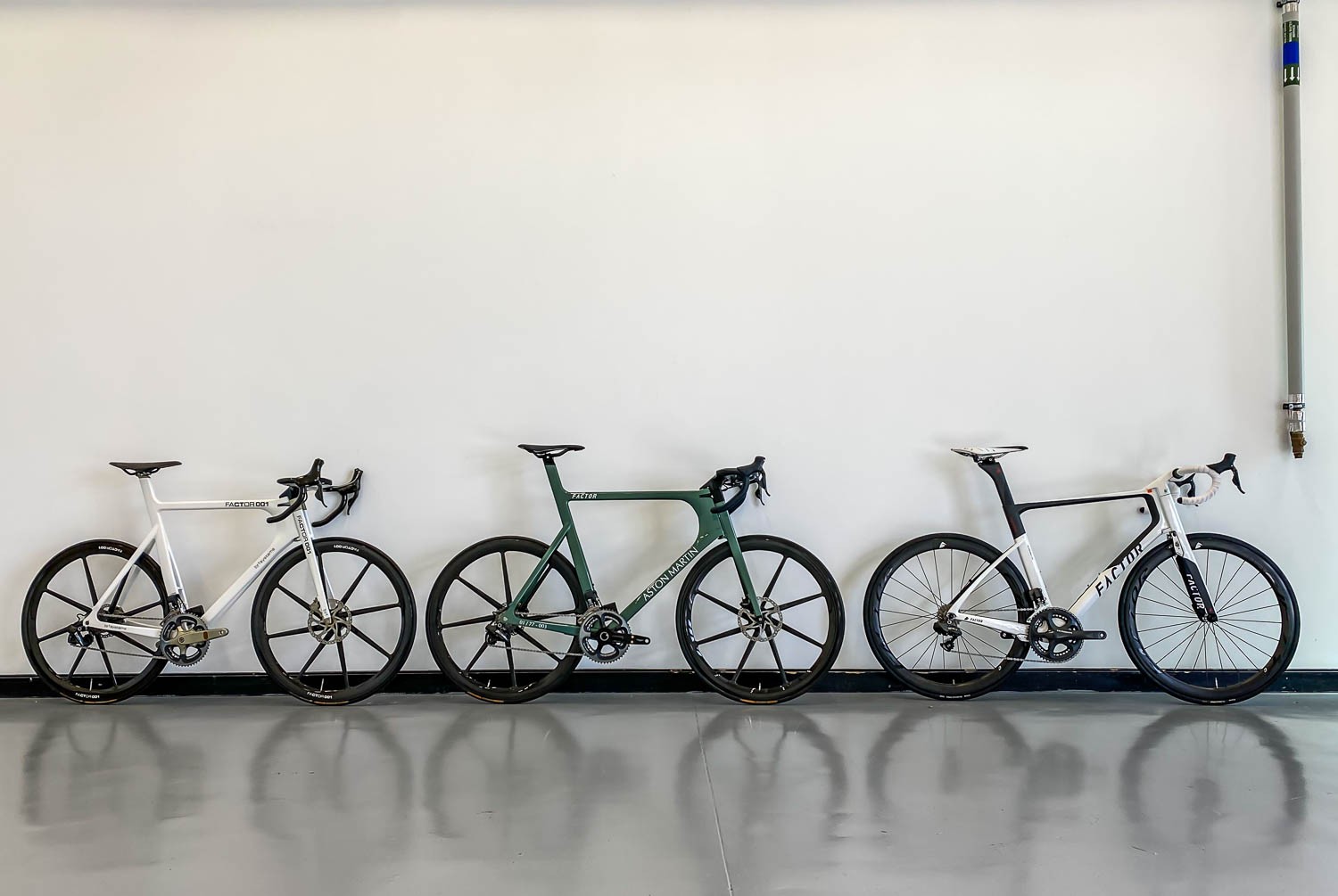
MAKING CONNECTIONS
A US-based agency was brought in to polish the design and John credits them with transforming the function-led output of F1 engineers into a commercial product. The bike evolved significantly and was named Vis Vires, Latin for ‘force, power’.
“The only part carried over from the 001 to the Vis Vires was the power meter crankset,” says John. “We went to rim brakes, which I regret, but there was no off-the-shelf road disc brake solution in 2012 and it would have cost a fortune to make our own. The cockpit solution was awkward, too, but we were trying to come up with a different approach to adjusting stack and reach while improving aerodynamics.”
Naturally, the BF1 engineers also used the opportunity to iterate and improve the bike’s performance. A great deal was learned about the potential of the Twin Vane downtube. Although it began as a structural optimisation, further testing revealed that Twin Vane created aerodynamics benefits around management of the wake from the front wheel. Seizing on these, the design was refined for both aero and stiffness.
“By evolving the tube shapes we greatly improved both the airflow and the torsional stiffness,” says John, “while also making it less of a nightmare to manufacture!”
When the finished Vis Vires was tested in a wind tunnel, it out-performed rivals from market leading brands. Factor Bikes were set to hit the ground running. Now all they needed was a factory. Enter Rob Gitelis.
Watch our video chat as John discusses the first chapter of the Factor story.
https://www.youtube.com/embed/JBG0KPdnRd0?feature=oembed
AWARDS AND ACCOLADES
Securing the services of a respected factory as a very small, new brand is extremely difficult. It helps if you’re ordering 10,000 of something the factory is used to making. That was emphatically not the case for Factor Bikes, but Gitelis had come recommended. John remembers their first meeting:
“We went to him with the Vis Vires and said, ‘We’ve got this really complicated bike that we want to build. It’s horrible to manufacture and we probably only want 100 of them. How do you feel about it?’ And he said, ‘Yeah, I’ll do it.’ Straight away we liked him because he got the idea of the bike and wanted to be involved.”
The Vis Vires launched at the Eurobike trade show in August 2013 and was immediately recognised with a prestigious IF Gold Award for road bike design. It looked amazing and the package customers received was arguably great value even at £9999 for the top-spec model – it included the world’s most advanced power meter, Dura-Ace Di2, carbon fibre wheels, an ENVE handlebar, and came with a Garmin computer and Scicon bike bag.
Even more important than the industry award, when BikeRadar had an exclusive first ride a few weeks ahead of the launch, they loved the ride. “The Vis Vires impressed instantly with its very high stiffness… It handles like a thoroughbred racer [and] is a joy in the corners.”
You can read the original review in full here:
Factor Bikes was on its way as a fully-fledged bike brand. But that brought its own problems.
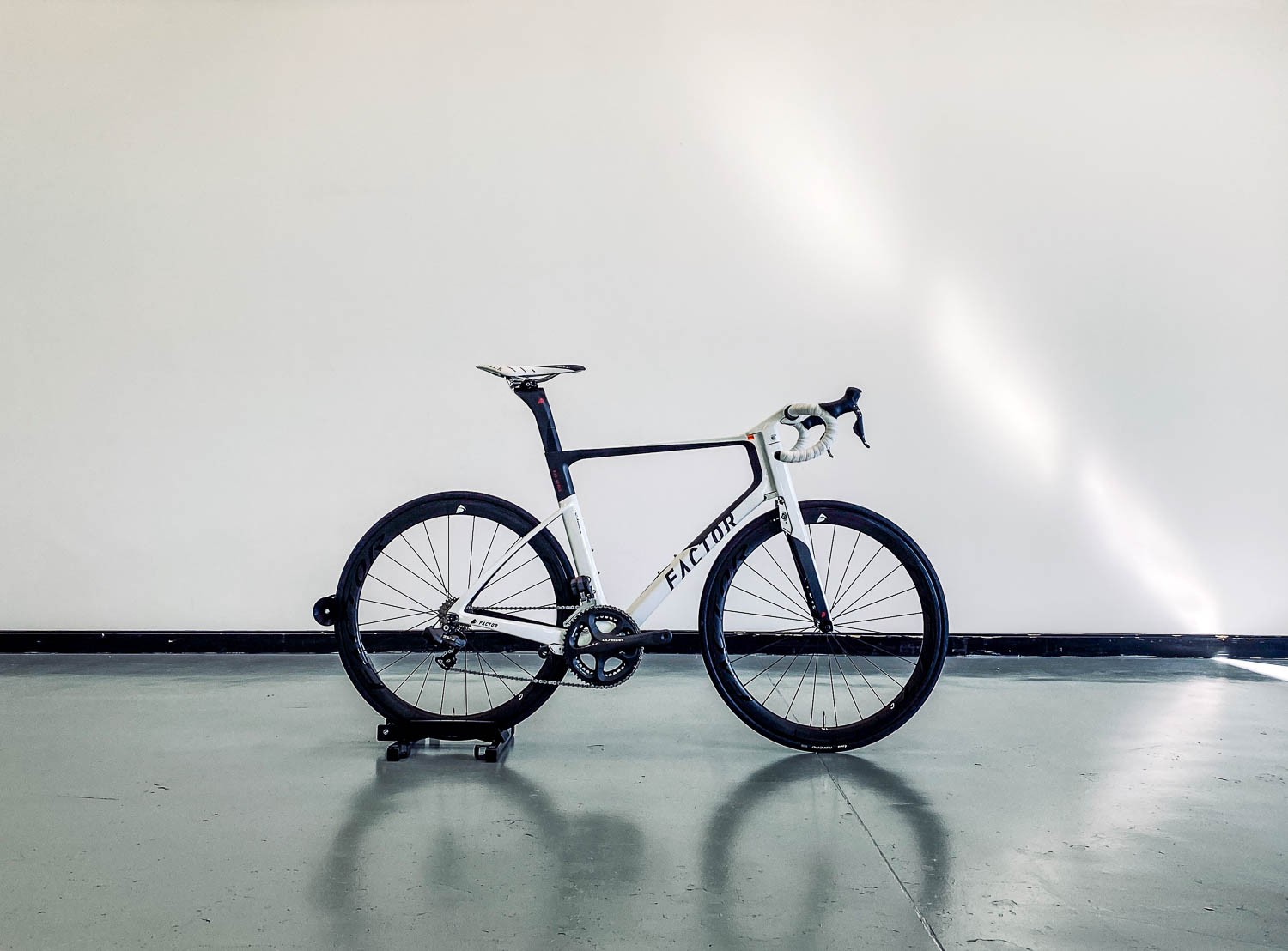
PASS THE TORCH
Sometimes you have to be careful what you wish for, and success can lead to a dead end. John Bailey was now the managing director of a bike brand as well as a very busy F1 engineering supplier.
“We made the first 100 bikes, and then I realised just what it was going to take to really build the brand, and I still had BF1 to run,” he says. “This is where the hindsight comes in, because I could have gone to Rob Gitelis at that point and suggested he buy into it, but I didn’t. It was a few months later that Rob and Baden Cooke came to me with their idea to take over Factor Bikes.”
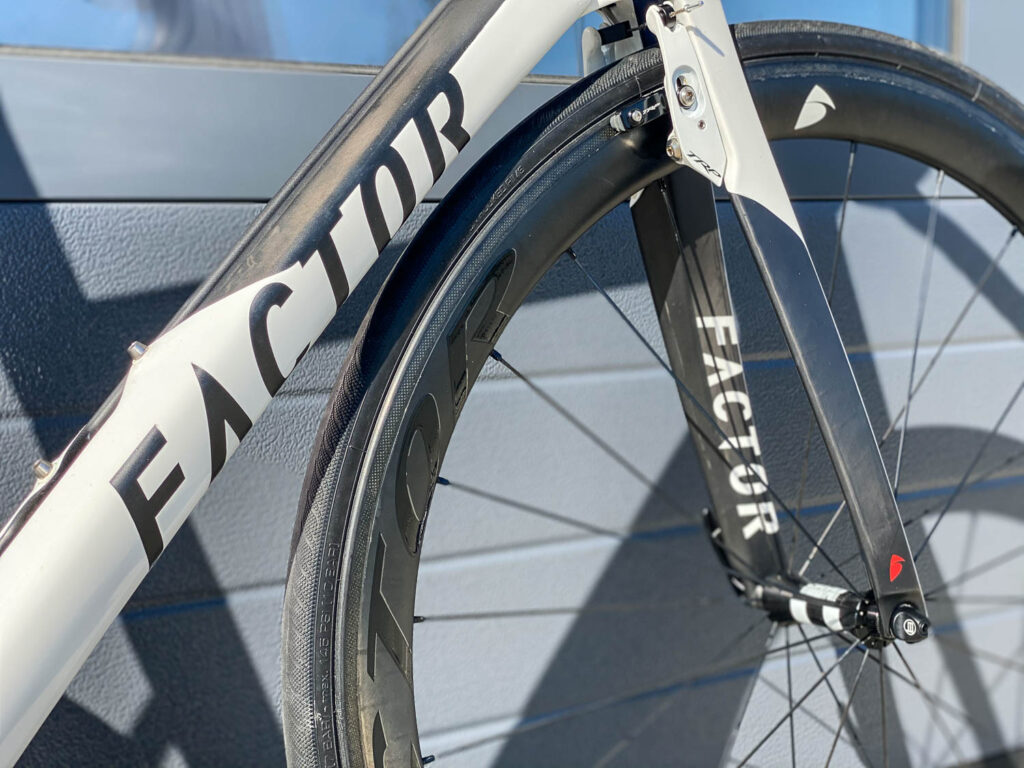
Baden Cooke was just then retiring from a long career in professional cycling, highlights of which include the green jersey at the Tour de France. He was looking for his next career and investment, but naturally, he wanted to try the bike for himself first.
“Baden came to Norfolk to ride the Vis Vires and he loved it. The ride quality of the bike is what secured its future,” remembers John.
“Rob and Baden understood our project and were enthusiastic to take it forward. I would have canned the company rather than sell it to just anyone, but with Rob behind it I knew there was a good chance that I’d see Factor Bikes again in the future.”
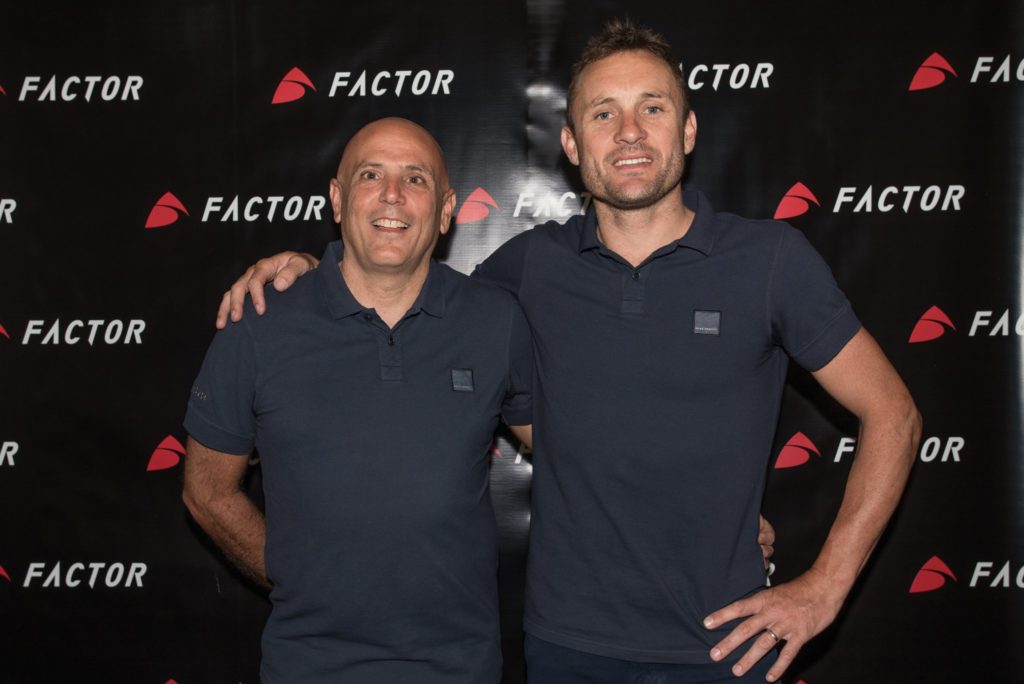
THE FINAL PHASE
Rob Gitelis took the remaining Vis Vires frames and designed a new, sleeker fork and cockpit that evolved and stayed faithful to the original concept; that became the super-fast Factor ONE aero road bike. The next step was to expand the range with a superlight bike for the mountains, and the first generation O2 was the perfect foil to the One.
“My attention went back to motorsport,” says John, “though I continued to follow cycling. One day in July 2017 I was casually watching the Tour de France, and there on my television was a Factor, being ridden by AG2R. It was an amazing moment.
“Factor Bikes had made it to the Tour de France, and I couldn’t have been happier.”
In part three: the story continues with Rob Gitelis as Factor Bikes breakthrough onto the world stage with AG2R.
Factor Timeline
2008 Work starts on 001
2009 Factor 001 concept revealed
2011 First media test of Factor 001
2011 Collaboration begins with Aston Martin
2012 July; A-M One-77 launched to compliment £1m hypercar
2012 August; Work begins to create the Factor Bikes brand
2013 July; First media test of Factor Vis Vires
2013 August; Vis Vires wins IF Gold award at Eurobike trade show
2015 Rob Gitelis and Baden Cooke acquire Factor Bikes
2016 Introduction of ONE
2016 Professional racing debut with UK team One Pro Cycling
2017 Introduction of O2
2017 WorldTour debut with AG2R
2017 Tour de France debut, Romain Bardet wins a stage and is 3rd overall

© 2025 Factor Bikes. All rights reserved / Privacy Policy |Terms